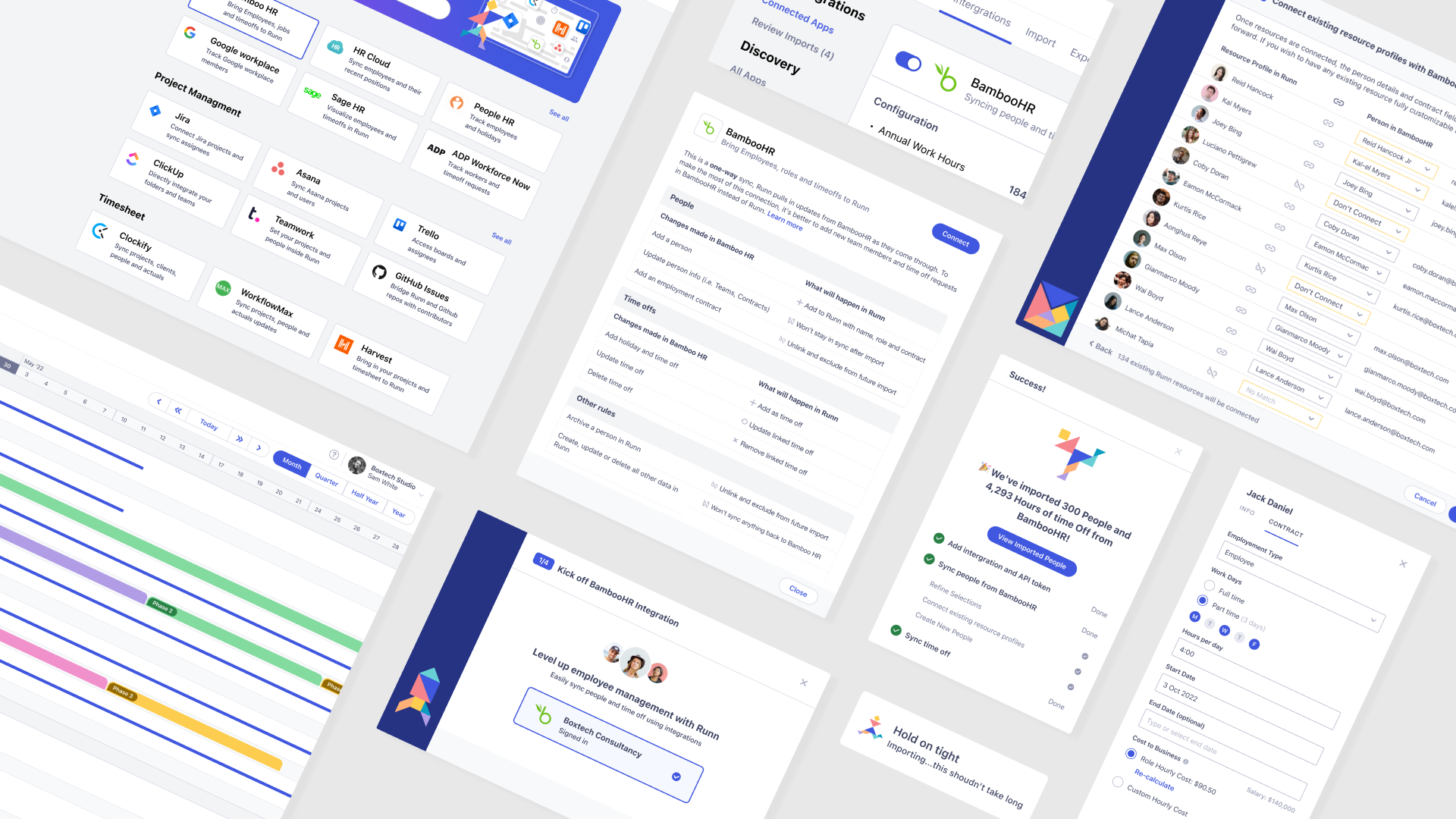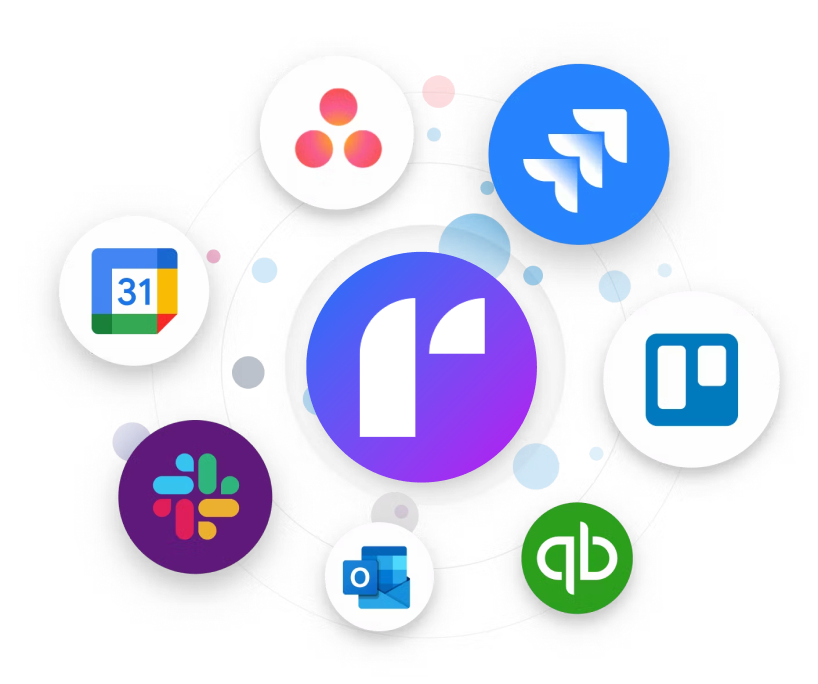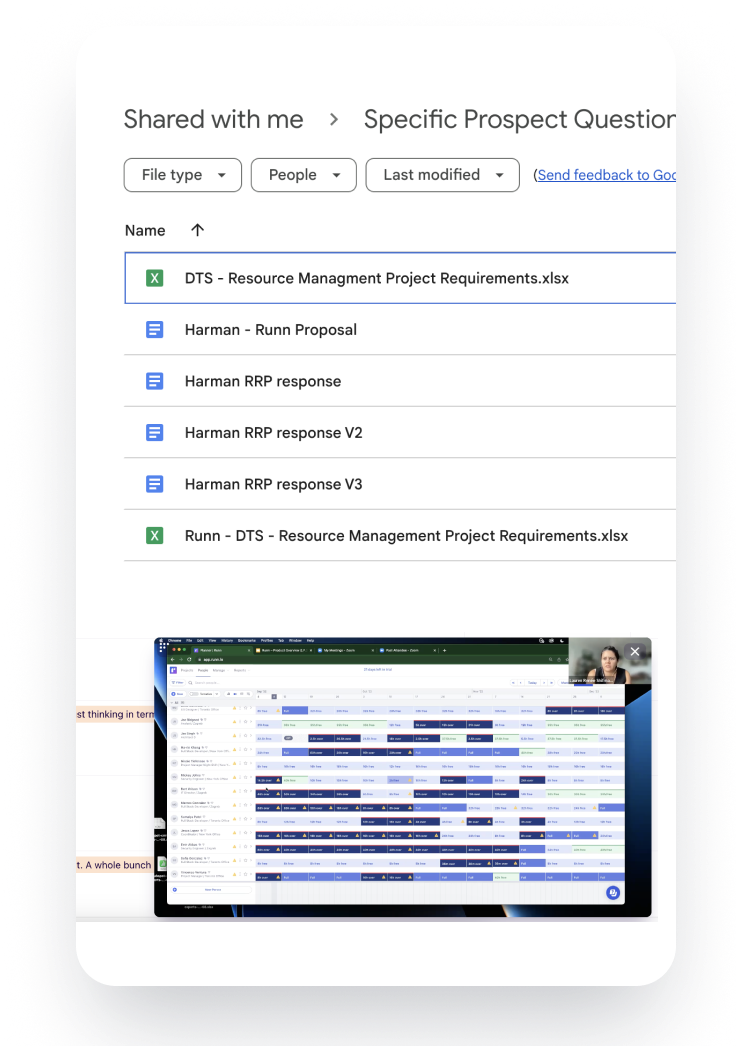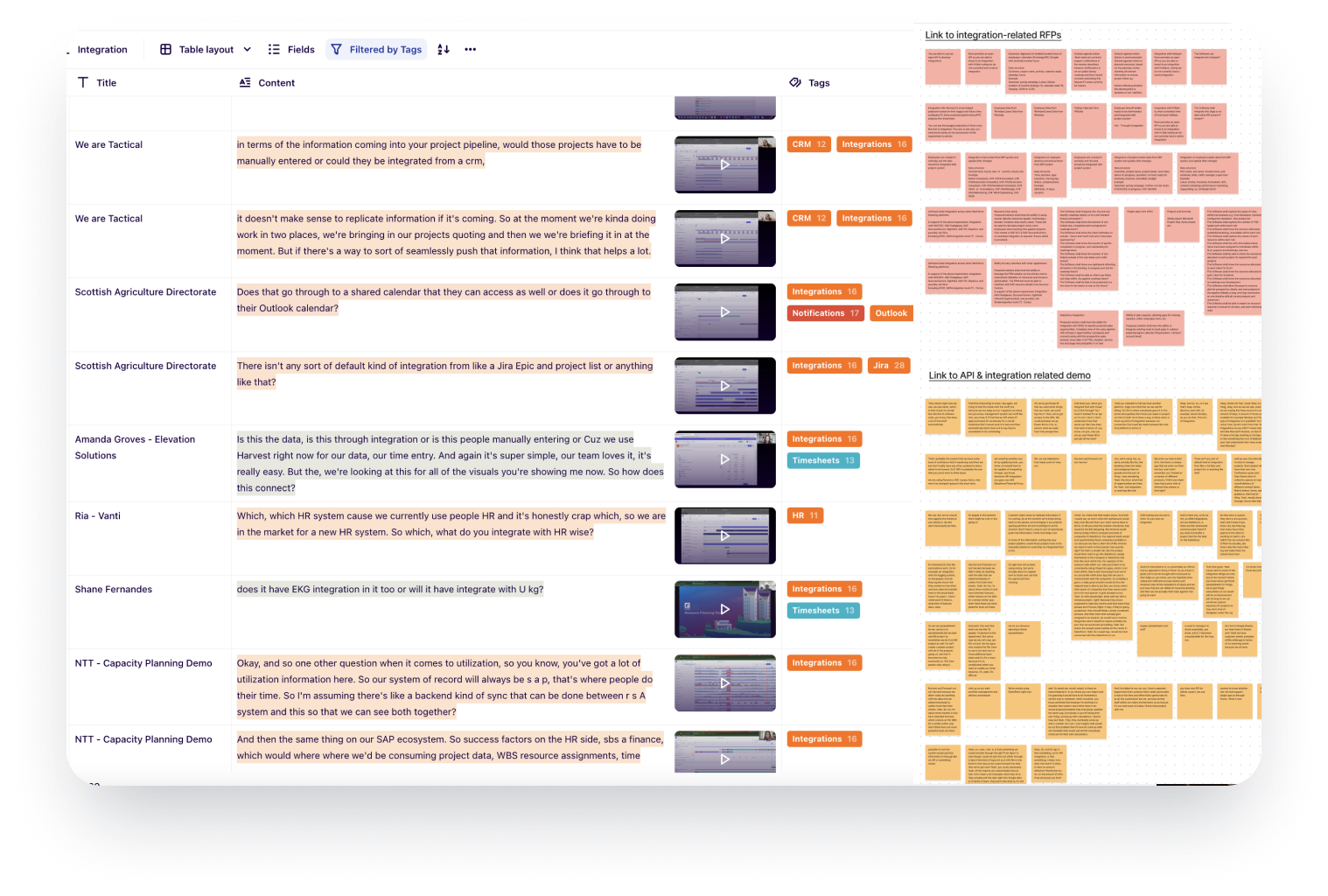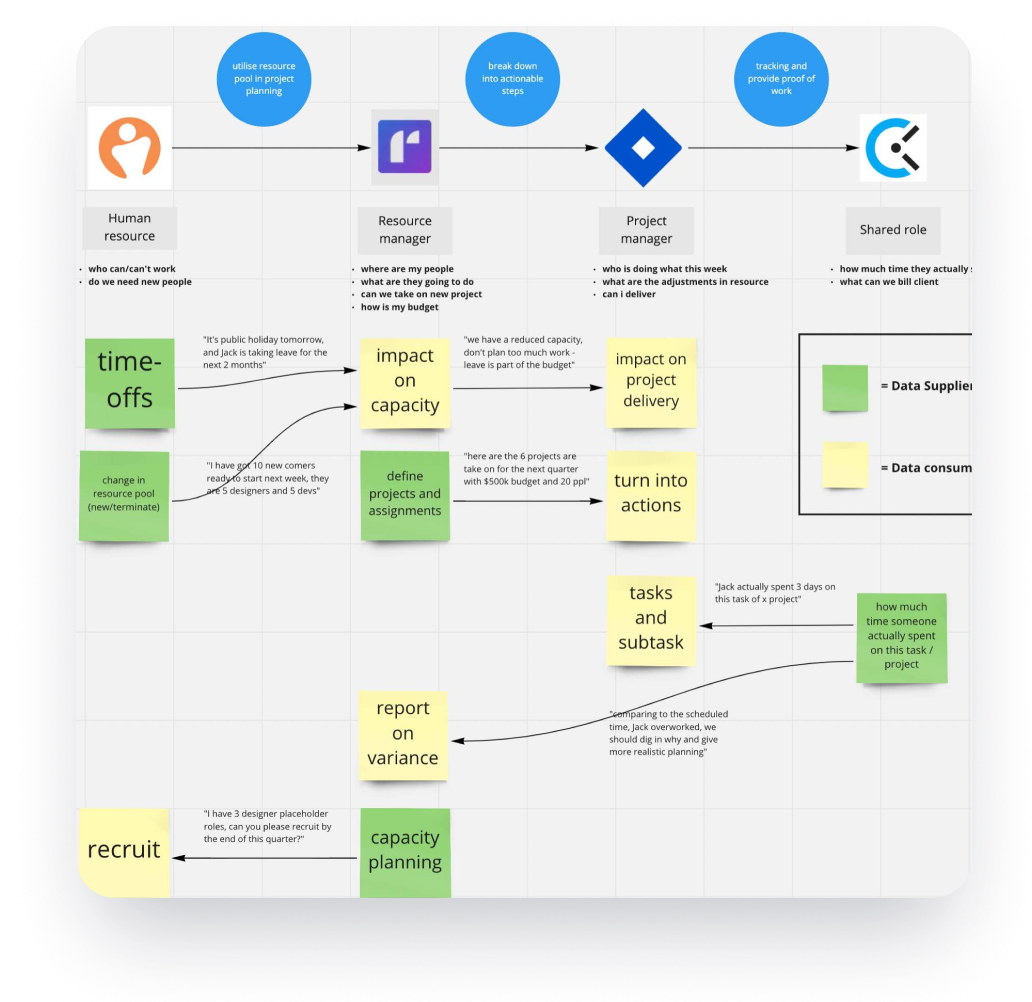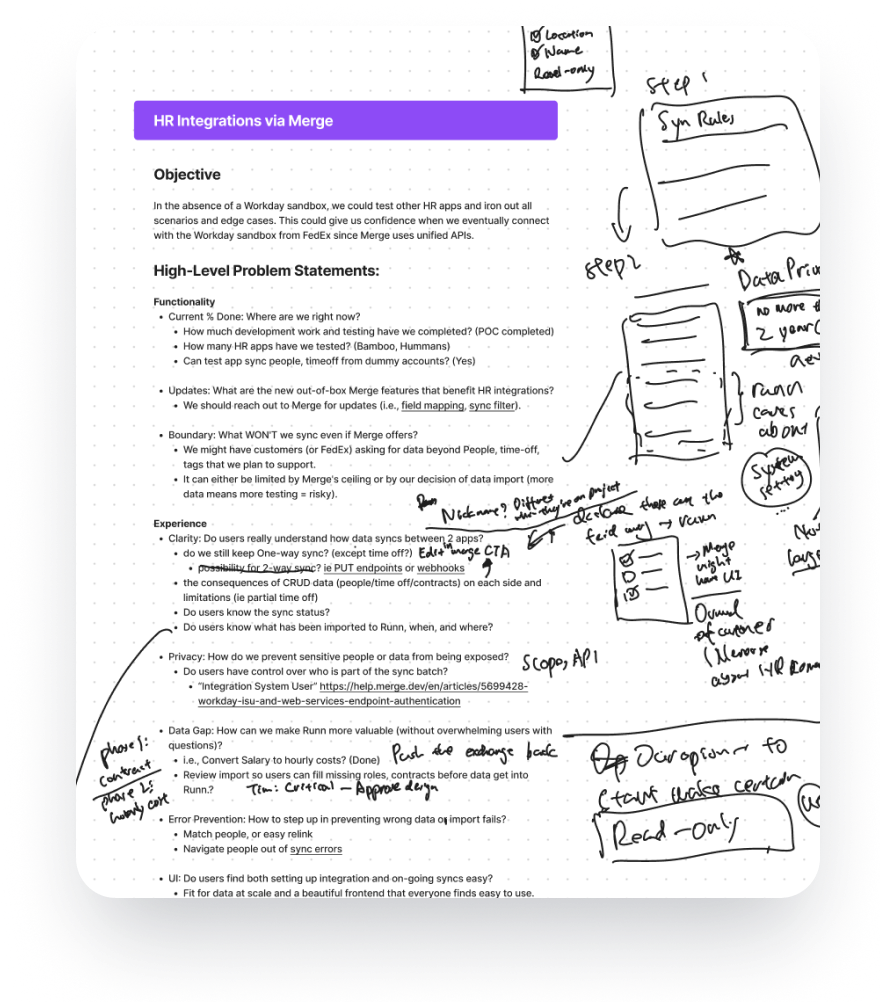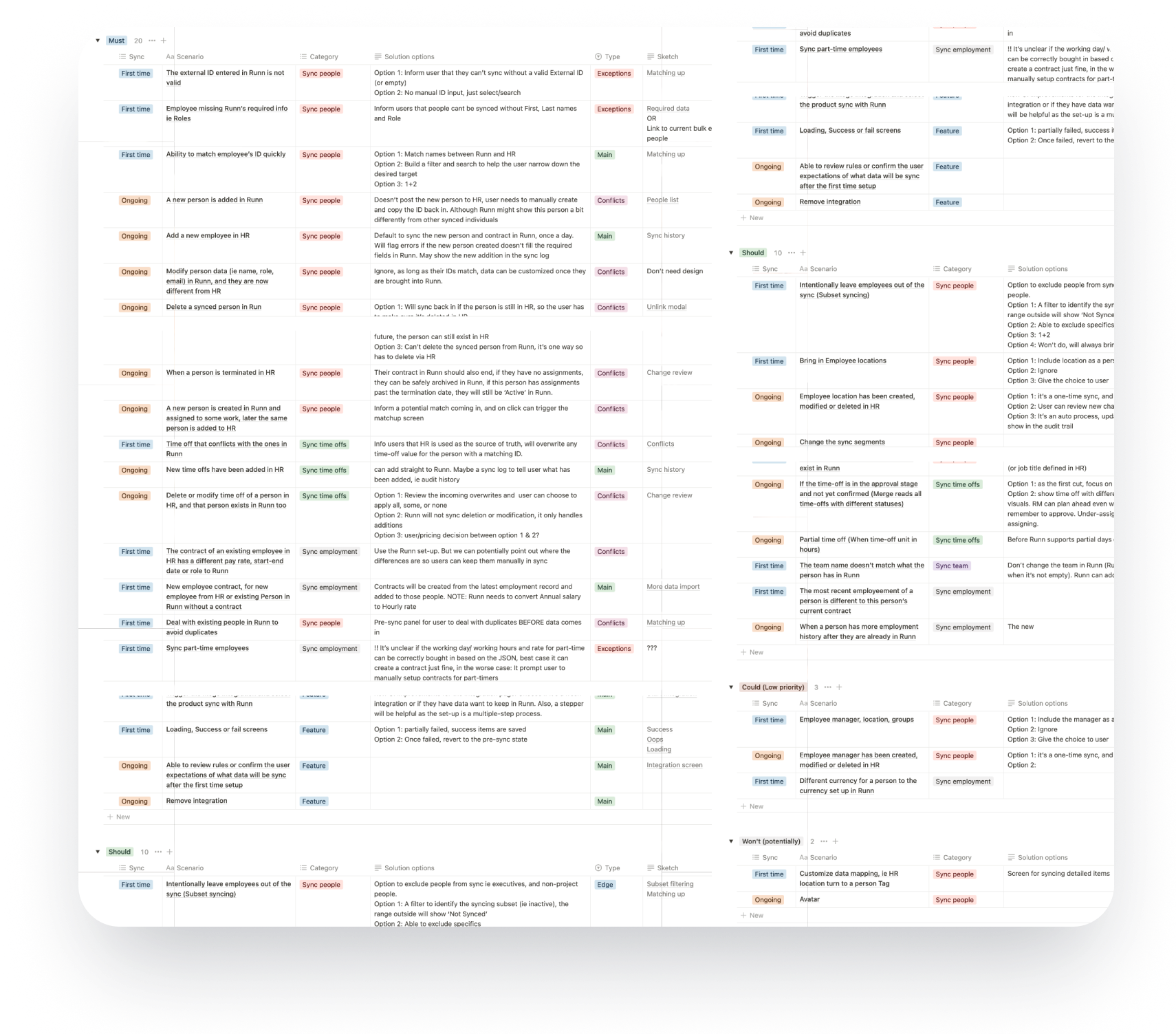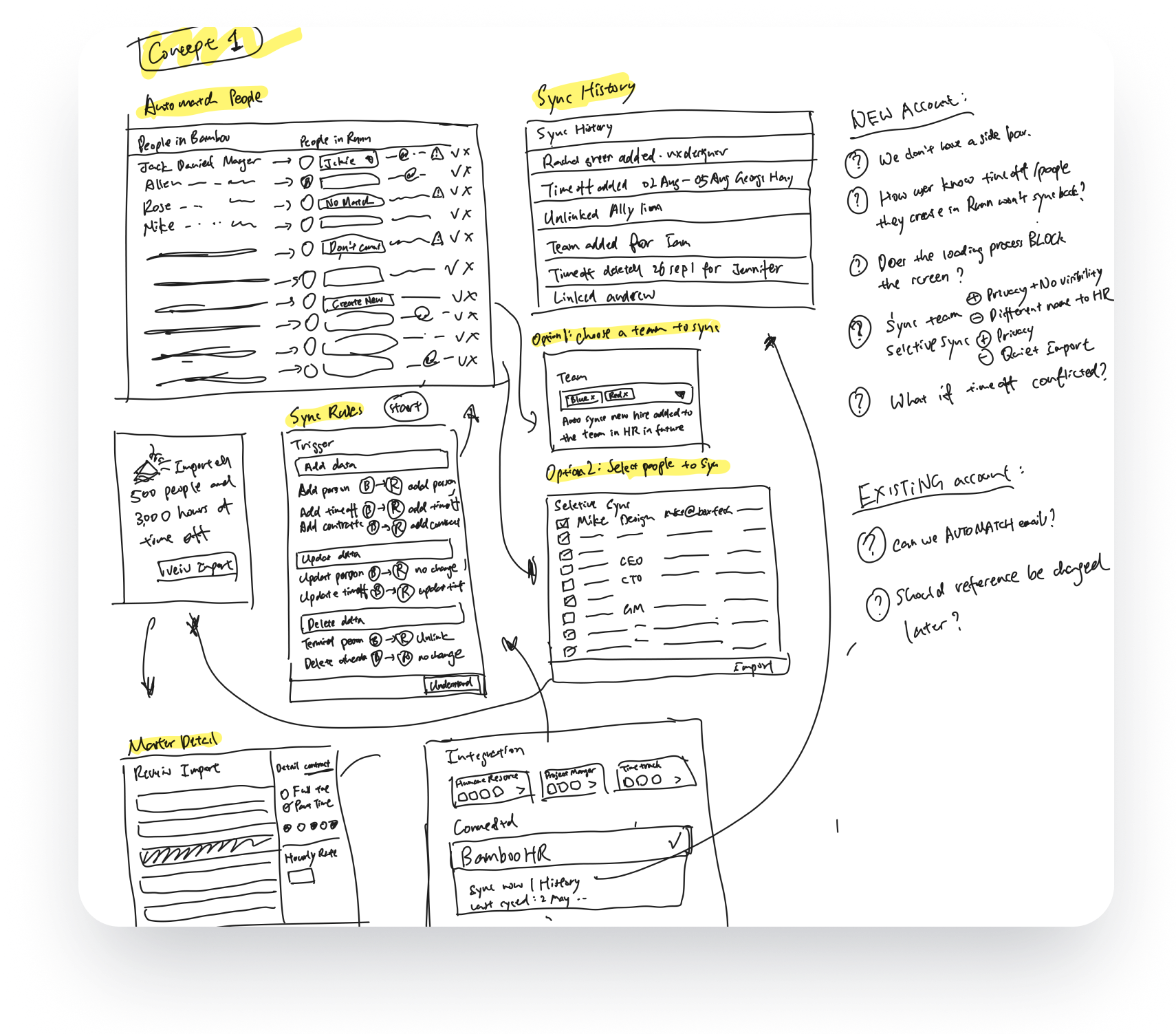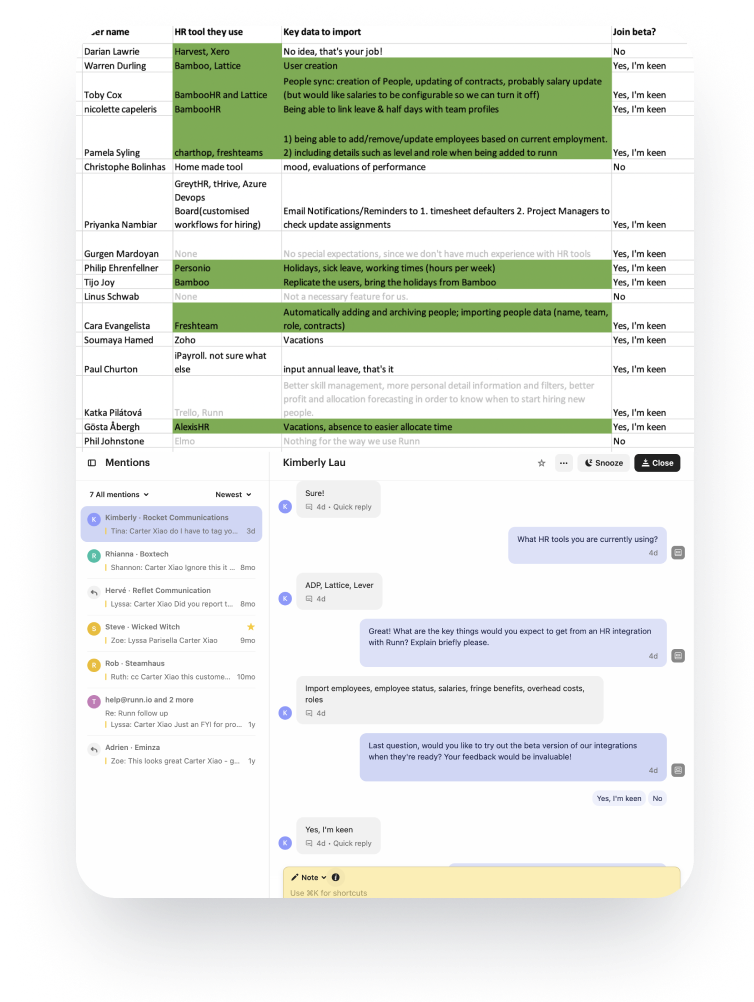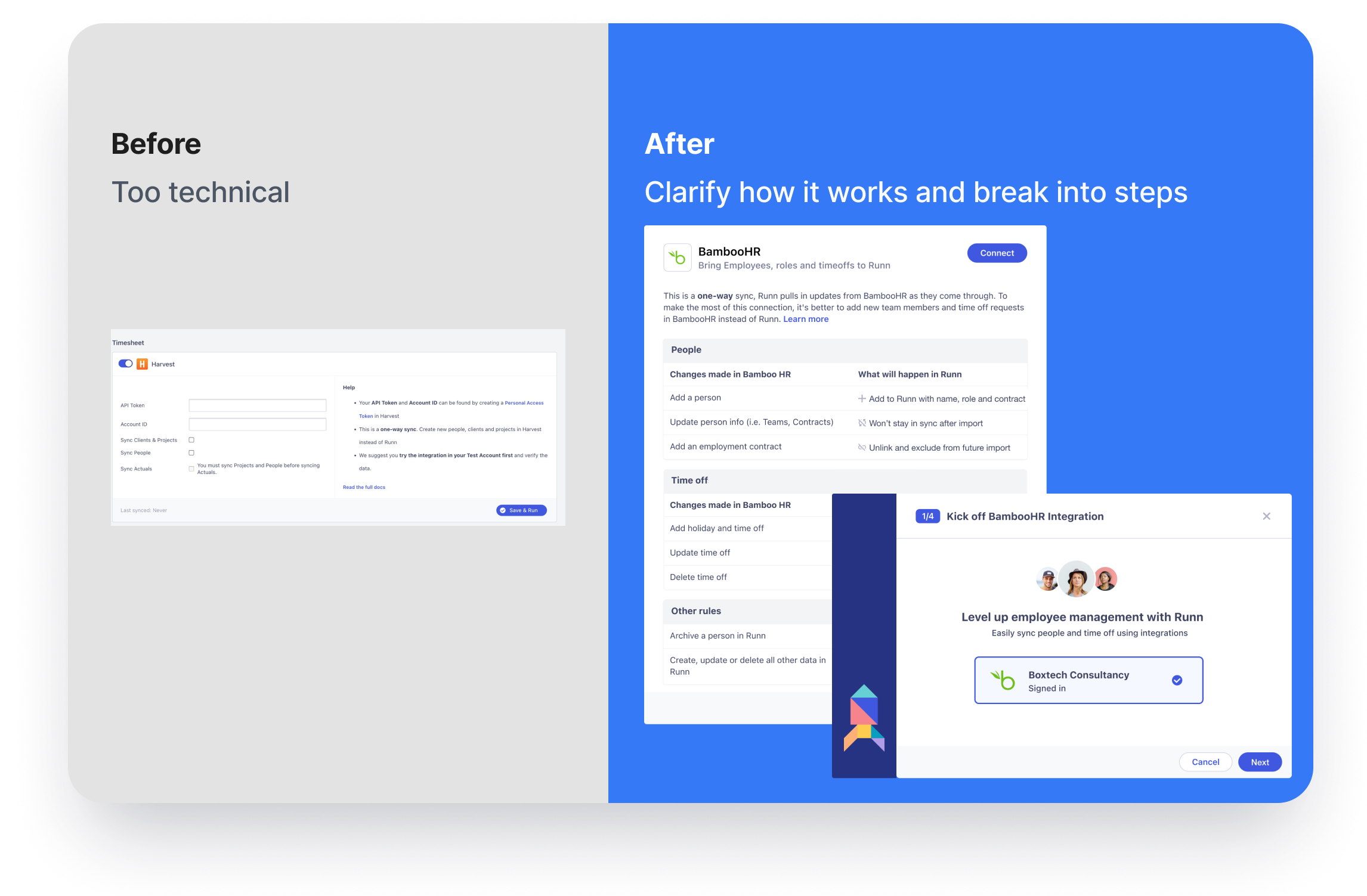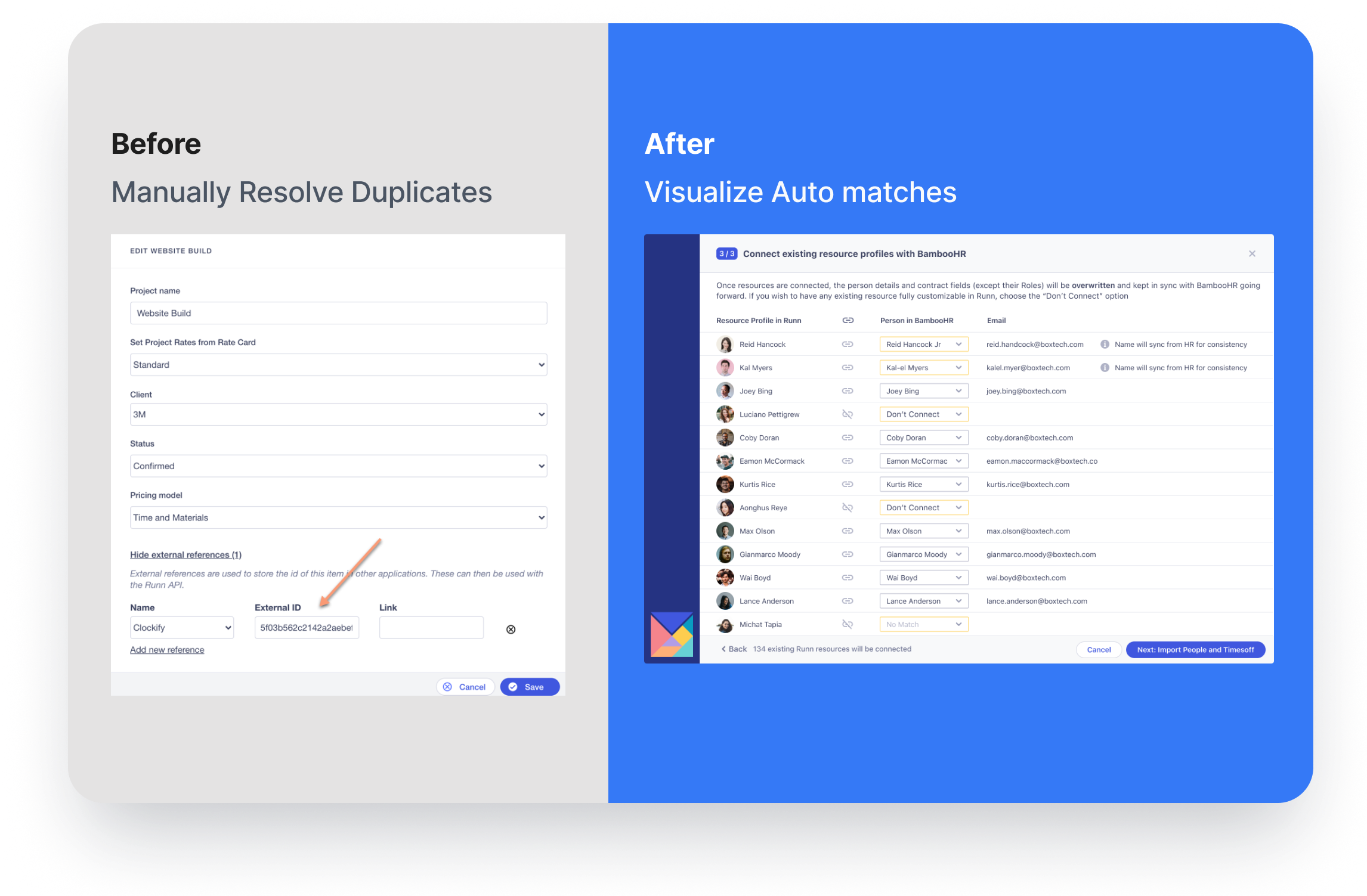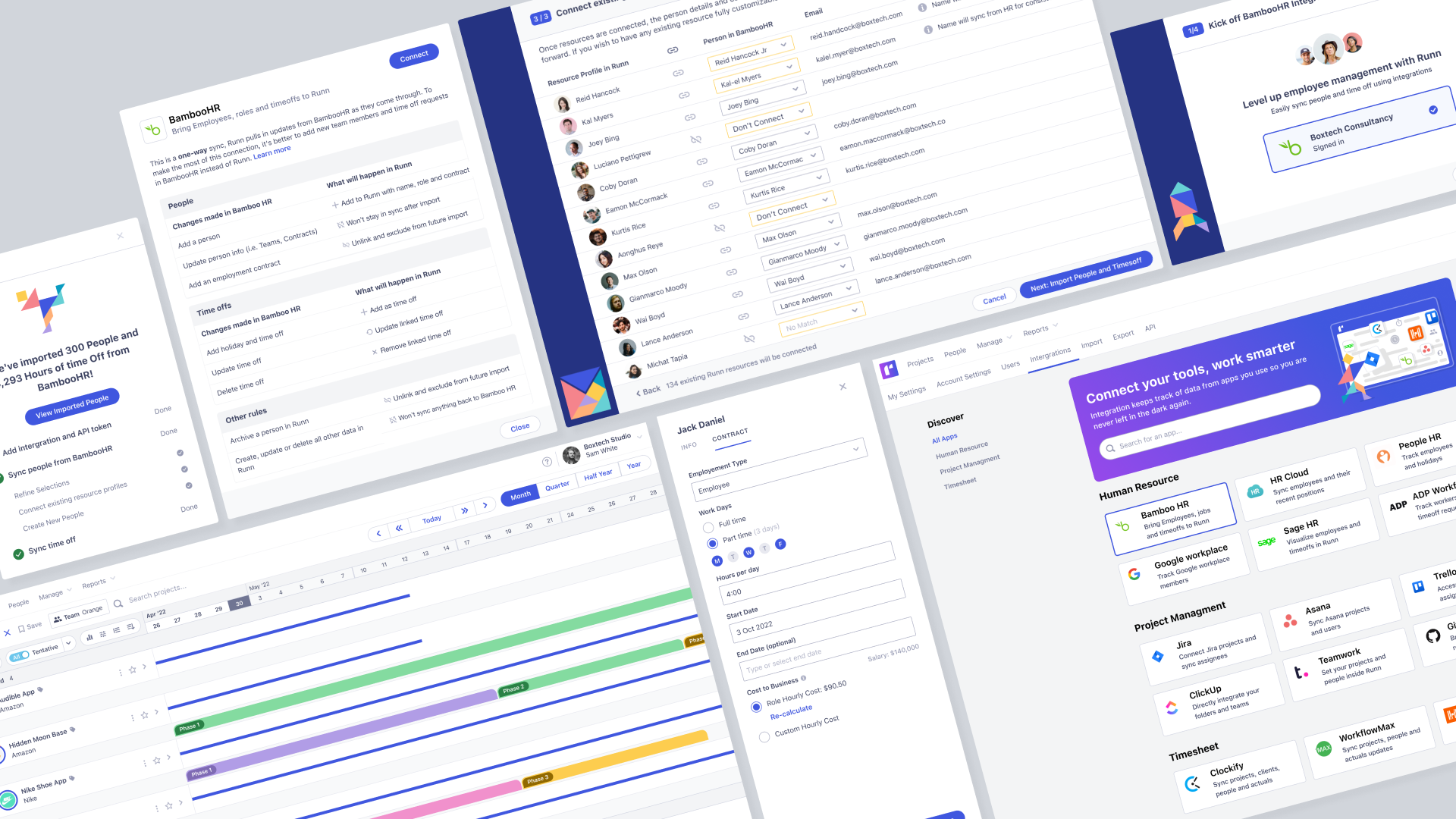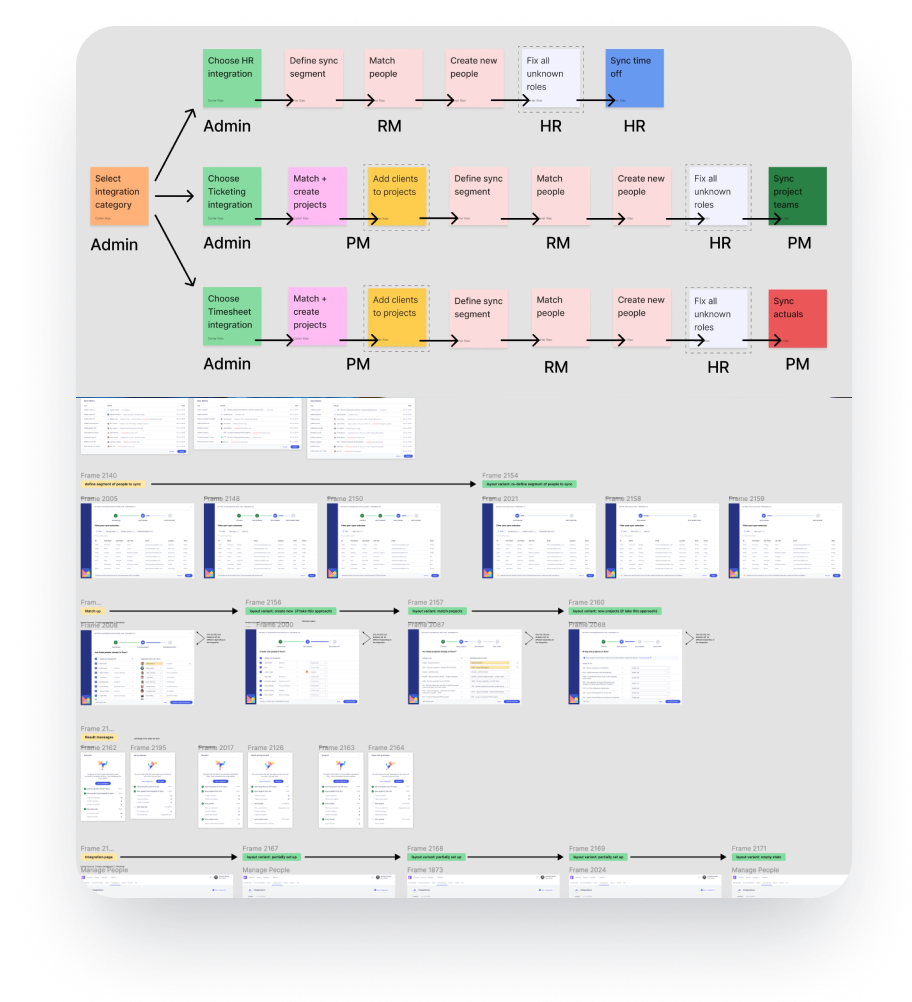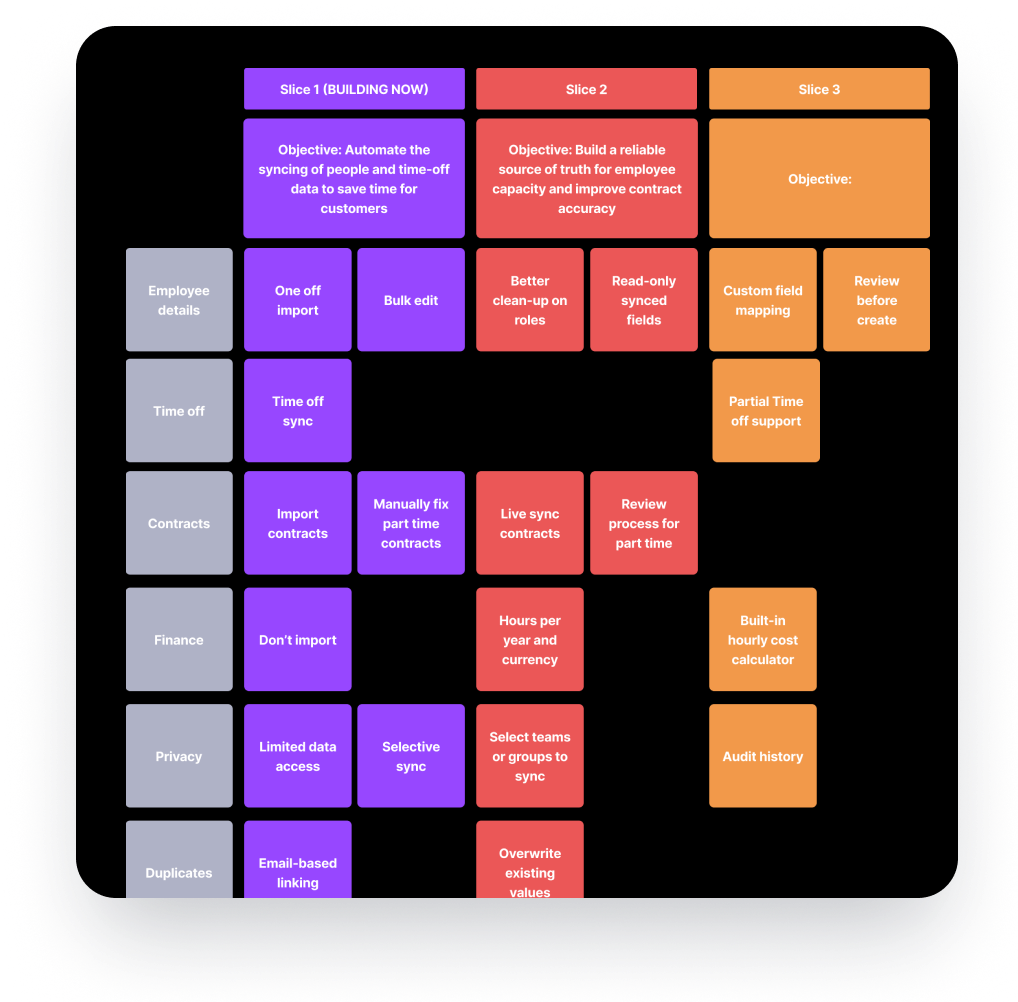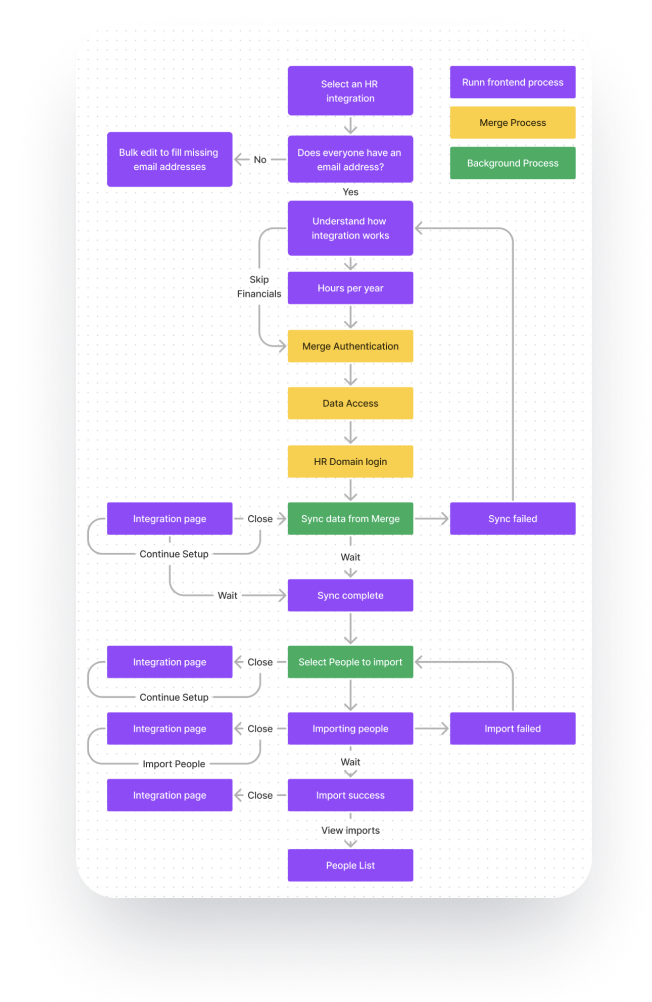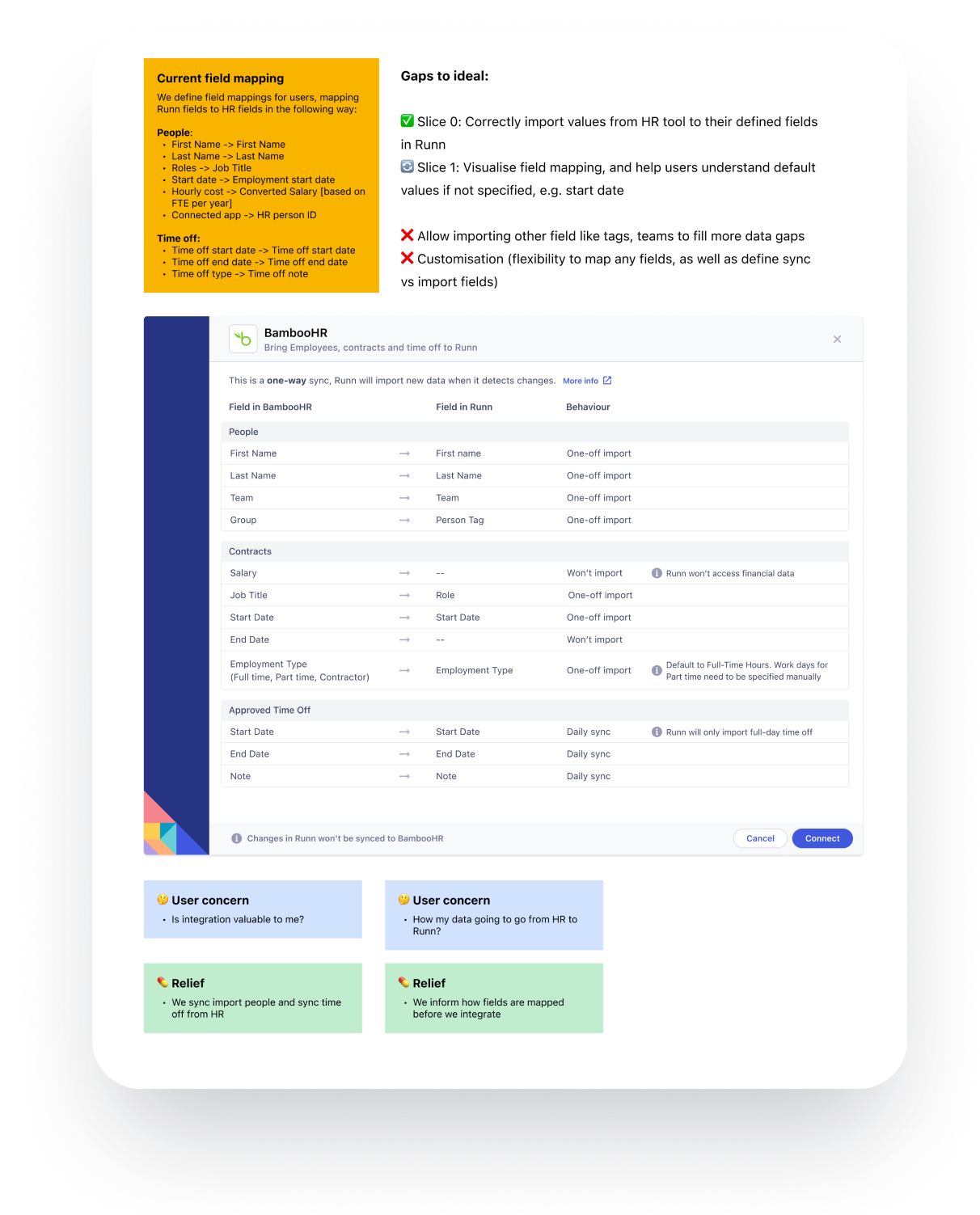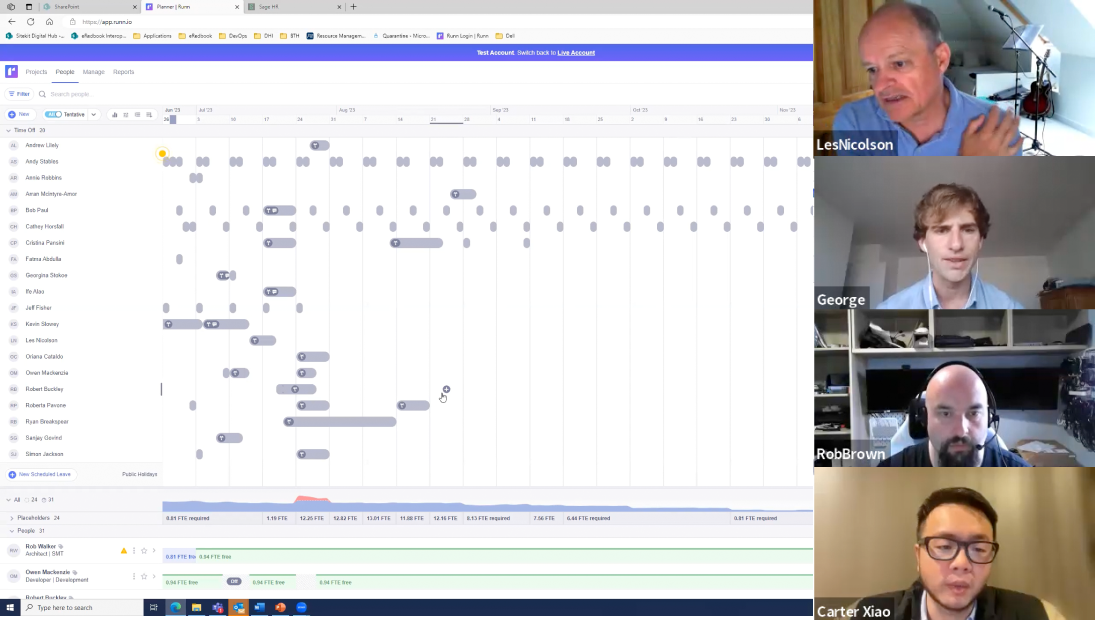TL;DR
It's painful for resource managers to manually bring HR data like contracts and leaves into Runn, and the CSV or bulk edit methods have failed to scale for enterprise customers, making this HR integration work strategically important. I started by gathering evidence of strong demand from support requests, pre-sale recordings, and RFPs, and facilitated feature workshops to align on desired outcomes with the CEO and Head of CS. I collaborated with the dev lead to design various scenarios, error handling, edge cases, and technical constraints. The approved concept significantly improved the UX for integration setup, duplicate resolution, and UI reusability.
To deliver a feasible solution, I made reasonable trade-offs between UX, value, and the effort required to build with 2 senior developers within a 6-week timeframe. Scope for iteration 1 was locked in early through effective negotiation and visual communications with stakeholders. I organized regular weekly updates to ensure quality and iterated based on feedback from beta tests.
This project has generated time efficiency and commercial outcomes, securing 9 new strategic enterprise deals with an average MRR of $7,000 USD each. It has also reduced churn risk and avoided losing prospects to competitors.

